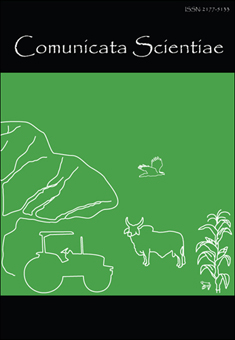Spatial variability process of the losses in the mechanized harvesting of cotton with different frames collection
DOI:
https://doi.org/10.14295/cs.v4i3.329Keywords:
Agricultura de precisão. Colhedora de algodão. Geoestatística.Abstract
In any mechanized operation is the common occurrence of losses, and in the case of the harvestis important that these be quantified in order to minimize them. The work aimed was evaluated theinfluence of spatial quantitative losses (soil, plants and total) in operation mechanically harvestedcotton, using frames with collection areas 1.125 m², 2.25 m² and 4.50 m². Samples were collected inthe municipality of Ipameri, GO, on a plot of 1.4 ha, being demarcated 41 points, spaced at 50 mx 9m. The crop was harvested by a combine harvester John Deere, model 9960, with five lines platform.The samples were collected by placing the frame on the ground, collecting all cotton lying onthe ground and then made up the collection that remained in the cotton plant after the passageof the harvester. Data were analyzed using descriptive statistics and geostatistics for making themaps. Losses had found large spatial variability, with high indices considered for the mechanicalharvesting of cotton, predominantly losses on losses in plants in soil. The frame of 4.50 m² showed thesmallest variance and coefficient of variation than the frames of 1.125 and 2.25 m².Downloads
Download data is not yet available.
Downloads
Additional Files
Published
2013-10-01
How to Cite
Silva, R. P. da, Cortez, J. W., Voltarelli, M. A., Cassia, M. T., & Furlani, C. E. A. (2013). Spatial variability process of the losses in the mechanized harvesting of cotton with different frames collection. Comunicata Scientiae, 4(3), 293–301. https://doi.org/10.14295/cs.v4i3.329
Issue
Section
Original Article
License
All articles published may be reproduced or utilized in any form or by any means whether specified Comunicata Scientiae, author(s), volume, pages and year. The authors are responsible for all the statements and concepts contained in the article.




